An Improved Spanning Tree-Based Algorithm for Coverage of Large Areas Using Multi-UAV Systems
Abstract
1. Introduction
- an Overlapping Region Reduction approach designed to minimize the redundancy regions for the coverage area;
- a trajectory smoothing approach based on last square solutions that we call trajectory smoothing using least squares solution (TSULSS). This approach enables a fast smoothing of long trajectories;
- An obstacle avoidance and replanning approach for unexpected obstacles (i.e., moving obstacles or fixed obstacles that exist but are unknown due to the absence of a map).
2. Related Works
3. Problem Formulation
4. Improved Artificially Weighted Spanning Tree Coverage
4.1. Partition of the Environment
| Algorithm 1 Partition of the Environment |
|
4.2. Proposed Approach
| Algorithm 2 Reduction of Overlapping Regions |
|
4.3. Complexity
5. Trajectory Smoothing Using Least Squares Solution
6. Online Obstacle Avoidance and Re-Planning
7. Quantitative Tests
7.1. Improvement of the Environment Partition
7.2. Evaluation of the Trajectory Smoothing
8. Results
8.1. Simulation
8.1.1. Numeric Simulation
8.1.2. Realistic Simulation
8.2. Real Robot Experiments
9. Conclusions
Author Contributions
Funding
Informed Consent Statement
Data Availability Statement
Conflicts of Interest
Abbreviations
| AWSTC | artificially weighted spanning tree coverage |
| IAWSTC | improved artificially weighted spanning tree coverage |
| STC | spanning tree coverage |
| CPP | coverage path planning |
| MCPP | multi-robot coverage path planning |
| MAV | micro air vehicle |
| UAV | unmanned aerial vehicle |
| ROS | robotic operating system |
| TSULSS | trajectory smoothing using least squares solution |
References
- Faigl, J.; Váňa, P.; Pěnička, R.; Saska, M. Unsupervised learning-based flexible framework for surveillance planning with aerial vehicles. J. Field Robot. 2019, 36, 270–301. [Google Scholar] [CrossRef]
- Feng, K.; Li, W.; Ge, S.; Pan, F. Packages delivery based on marker detection for UAVs. In Proceedings of the 2020 Chinese Control And Decision Conference (CCDC), Hefei, China, 22–24 August 2020; pp. 2094–2099. [Google Scholar] [CrossRef]
- Smrčka, D.; Báča, T.; Nascimento, T.; Saska, M. Admittance Force-Based UAV-Wall Stabilization and Press Exertion for Documentation and Inspection of Historical Buildings. In Proceedings of the 2021 International Conference on Unmanned Aircraft Systems (ICUAS), Athens, Greece, 15–18 June 2021; pp. 552–559. [Google Scholar] [CrossRef]
- Baca, T.; Petrlik, M.; Vrba, M.; Spurny, V.; Penicka, R.; Hert, D.; Saska, M. The MRS UAV System: Pushing the Frontiers of Reproducible Research, Real-world Deployment, and Education with Autonomous Unmanned Aerial Vehicles. J. Intell. Robot. Syst. 2021, 102, 26. [Google Scholar] [CrossRef]
- Kapoutsis, A.C.; Chatzichristofis, S.A.; Kosmatopoulos, E.B. DARP: Divide Areas Algorithm for Optimal Multi-Robot Coverage Path Planning. J. Intell. Robot. Syst. 2017, 86, 663–680. [Google Scholar] [CrossRef]
- Dong, W.; Liu, S.; Ding, Y.; Sheng, X.; Zhu, X. An Artificially Weighted Spanning Tree Coverage Algorithm for Decentralized Flying Robots. IEEE Trans. Autom. Sci. Eng. 2020, 17, 1689–1698. [Google Scholar] [CrossRef]
- Huang, X.; Sun, M.; Zhou, H.; Liu, S. A Multi-Robot Coverage Path Planning Algorithm for the Environment With Multiple Land Cover Types. IEEE Access 2020, 8, 198101–198117. [Google Scholar] [CrossRef]
- Gabriely, Y.; Rimon, E. Spanning-tree based coverage of continuous areas by a mobile robot. In Proceedings of the 2001 ICRA. IEEE International Conference on Robotics and Automation, Seoul, Republic of Korea, 21–26 May 2001; Volume 2, pp. 1927–1933. [Google Scholar] [CrossRef]
- Agmon, N.; Hazon, N.; Kaminka, G. Constructing spanning trees for efficient multi-robot coverage. In Proceedings of the 2006 IEEE International Conference on Robotics and Automation, Orlando, FL, USA, 15–19 May 2006; pp. 1698–1703. [Google Scholar] [CrossRef]
- Jiao, Y.S.; Wang, X.M.; Chen, H.; Li, Y. Research on the coverage path planning of UAVs for polygon areas. In Proceedings of the 2010 5th IEEE Conference on Industrial Electronics and Applications, Taichung, Taiwan, 15–17 June 2010; pp. 1467–1472. [Google Scholar] [CrossRef]
- Kang, Z.; Ling, H.; Zhu, T.; Luo, H. Coverage Flight Path Planning for Multi-rotor UAV in Convex Polygon Area. In Proceedings of the 2019 Chinese Control And Decision Conference (CCDC), Nanchang, China, 3–5 June 2019; pp. 1930–1937. [Google Scholar] [CrossRef]
- Ruan, L.; Wang, J.; Chen, J.; Xu, Y.; Yang, Y.; Jiang, H.; Zhang, Y.; Xu, Y. Energy-efficient multi-UAV coverage deployment in UAV networks: A game-theoretic framework. China Commun. 2018, 15, 194–209. [Google Scholar] [CrossRef]
- Avellar, G.; Pereira, G.; Pimenta, L.; Iscold, P. Multi-UAV Routing for Area Coverage and Remote Sensing with Minimum Time. Sensors 2015, 15, 27783–27803. [Google Scholar] [CrossRef] [PubMed]
- Kim, M.; Ali Memon, S.; Shin, M.; Son, H. Dynamic based trajectory estimation and tracking in an uncertain environment. Expert Syst. Appl. 2021, 177, 114919. [Google Scholar] [CrossRef]
- Memon, S.A.; Ullah, I. Detection and tracking of the trajectories of dynamic UAVs in restricted and cluttered environment. Expert Syst. Appl. 2021, 183, 115309. [Google Scholar] [CrossRef]
- Li, F.F.; Du, Y.; Jia, K.J. Path planning and smoothing of mobile robot based on improved artificial fish swarm algorithm. Sci. Rep. 2022, 12, 659. [Google Scholar] [CrossRef] [PubMed]
- Kurenkov, M.; Potapov, A.; Savinykh, A.; Yudin, E.; Kruzhkov, E.; Karpyshev, P.; Tsetserukou, D. NFOMP: Neural Field for Optimal Motion Planner of Differential Drive Robots With Nonholonomic Constraints. IEEE Robot. Autom. Lett. 2022, 7, 10991–10998. [Google Scholar] [CrossRef]
- Kim, T.; Park, G.; Kwak, K.; Bae, J.; Lee, W. Smooth Model Predictive Path Integral Control without Smoothing. IEEE Robot. Autom. Lett. 2022, 7, 10406–10413. [Google Scholar] [CrossRef]
- Ravankar, A.; Ravankar, A.; Kobayashi, Y.; Hoshino, Y.; Peng, C.C. Path Smoothing Techniques in Robot Navigation: State-of-the-Art, Current and Future Challenges. Sensors 2018, 18, 3170. [Google Scholar] [CrossRef] [PubMed]
- Huh, U.Y.; Chang, S.R. A G2 Continuous Path-smoothing Algorithm Using Modified Quadratic Polynomial Interpolation. Int. J. Adv. Robot. Syst. 2014, 11, 25. [Google Scholar] [CrossRef]
- Zhou, F.; Song, B.; Tian, G. Bézier curve based smooth path planning for mobile robot. J. Inf. Comput. Sci. 2011, 8, 2441–2450. [Google Scholar]
- Li, X.; Gao, X.; Zhang, W.; Hao, L. Smooth and collision-free trajectory generation in cluttered environments using cubic B-spline form. Mech. Mach. Theory 2022, 169, 104606. [Google Scholar] [CrossRef]
- Biagiotti, L.; Melchiorri, C. Online trajectory planning and filtering for robotic applications via B-spline smoothing filters. In Proceedings of the 2013 IEEE/RSJ International Conference on Intelligent Robots and Systems, Tokyo, Japan, 3–7 November 2013; pp. 5668–5673. [Google Scholar] [CrossRef]
- Hashemian, A.; Hosseini, S.F.; Nabavi, S.N. Kinematically smoothing trajectories by NURBS reparameterization—An innovative approach. Adv. Robot. 2017, 31, 1296–1312. [Google Scholar] [CrossRef]
- Lin, Y.; Saripalli, S. Path planning using 3D Dubins Curve for Unmanned Aerial Vehicles. In Proceedings of the 2014 International Conference on Unmanned Aircraft Systems (ICUAS), Orlando, FL, USA, 27–30 May 2014; pp. 296–304. [Google Scholar] [CrossRef]
- Brezak, M.; Petrović, I. Path Smoothing Using Clothoids for Differential Drive Mobile Robots. IFAC Proc. Vol. 2011, 44, 1133–1138. [Google Scholar] [CrossRef]
- Ravankar, A.; Ravankar, A.A.; Kobayashi, Y.; Emaru, T. SHP: Smooth Hypocycloidal Paths with Collision-Free and Decoupled Multi-Robot Path Planning. Int. J. Adv. Robot. Syst. 2016, 13, 133. [Google Scholar] [CrossRef]
- Quigley, M.; Conley, K.; Gerkey, B.; Faust, J.; Foote, T.; Leibs, J.; Wheeler, R.; Ng, A.Y. ROS: An Open-Source Robot Operating System; ICRA Workshop on Open Source Software: Kobe, Japan, 2009; p. 5. [Google Scholar]
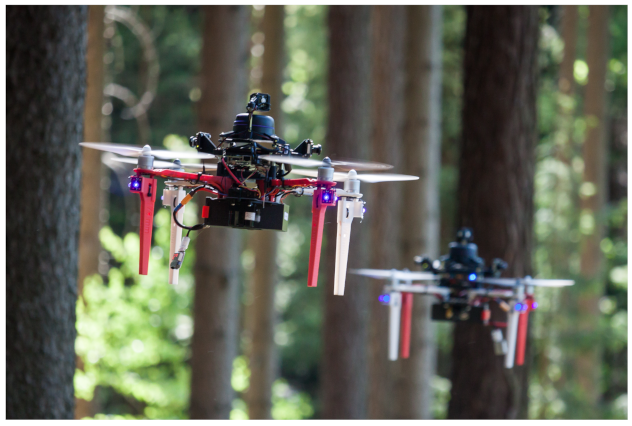
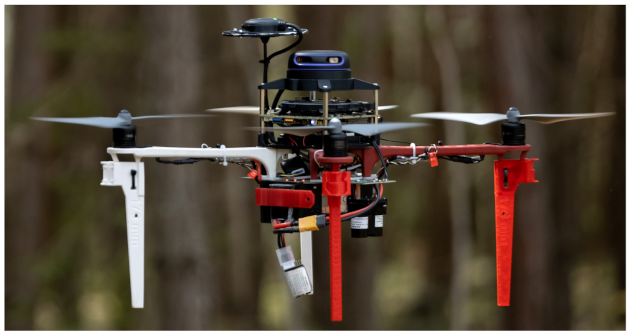

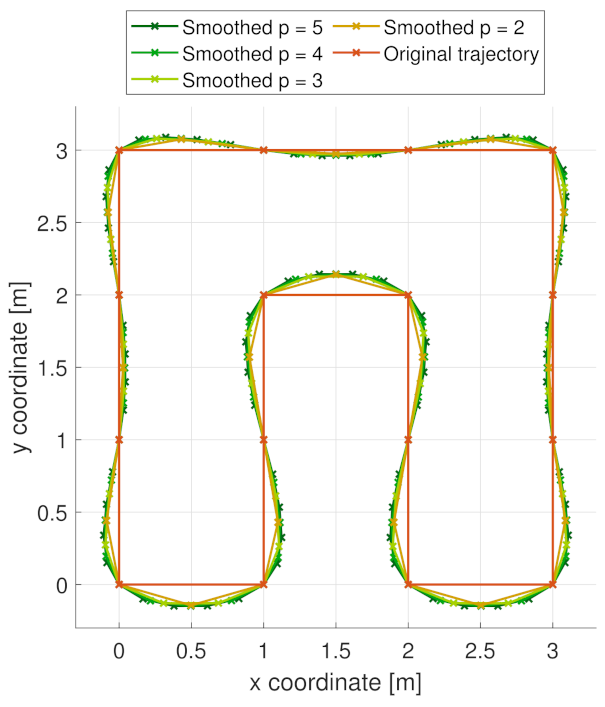
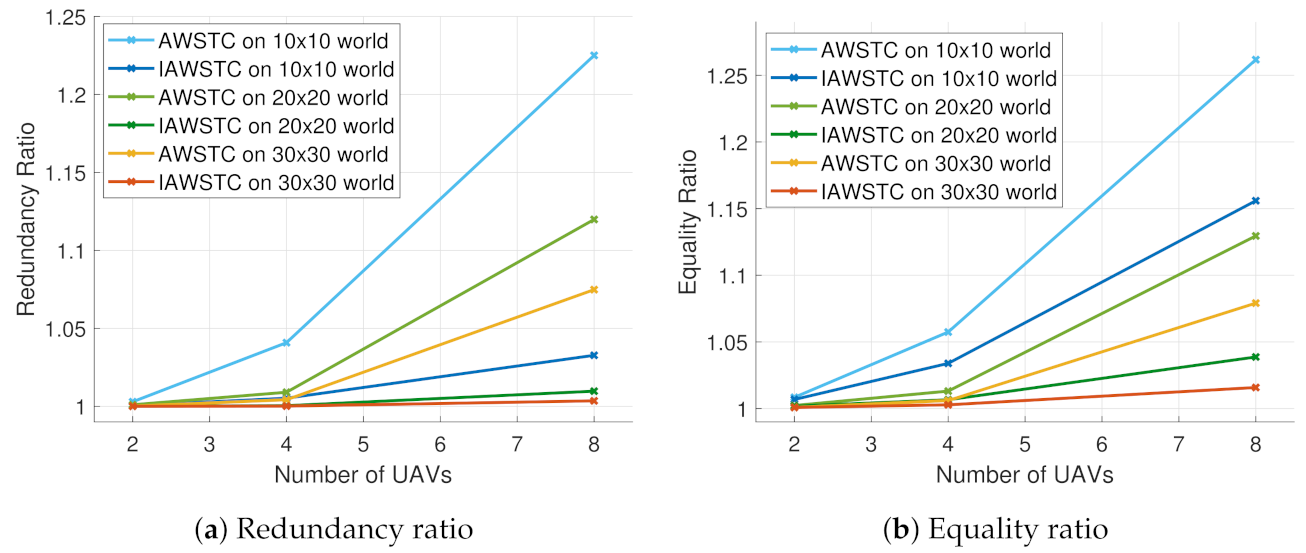
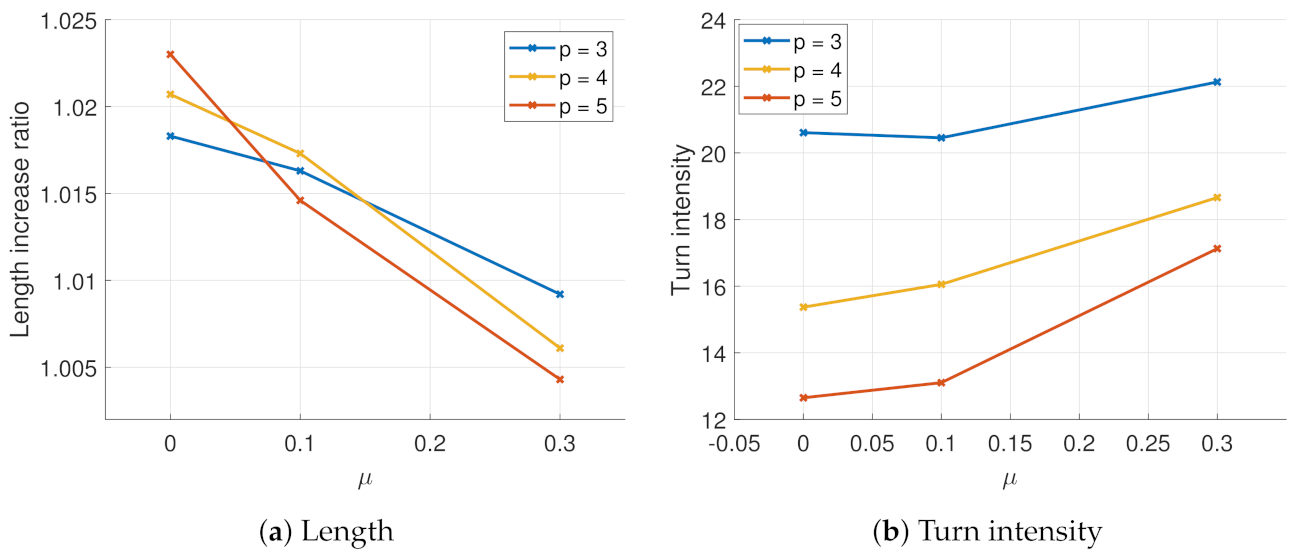

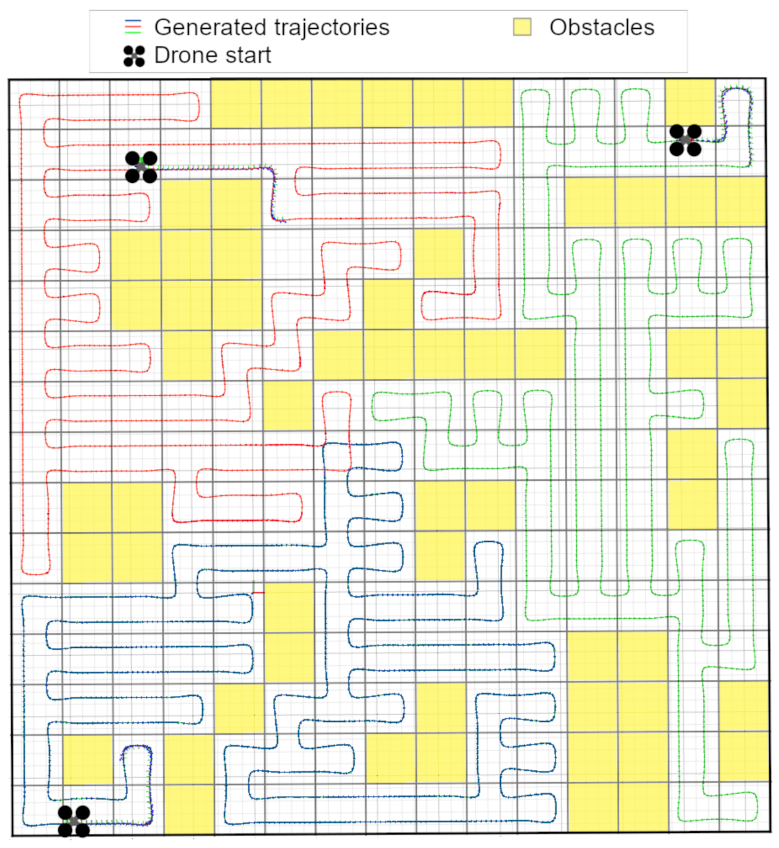
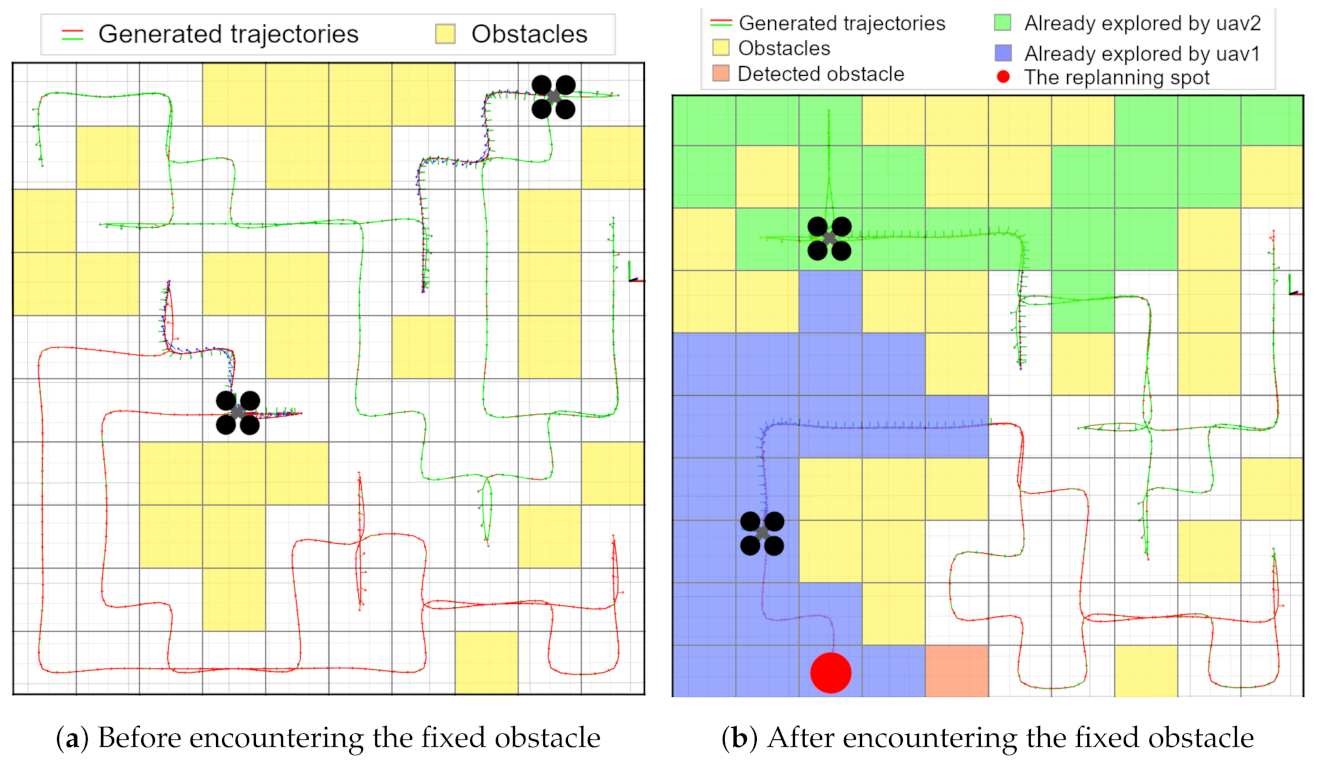
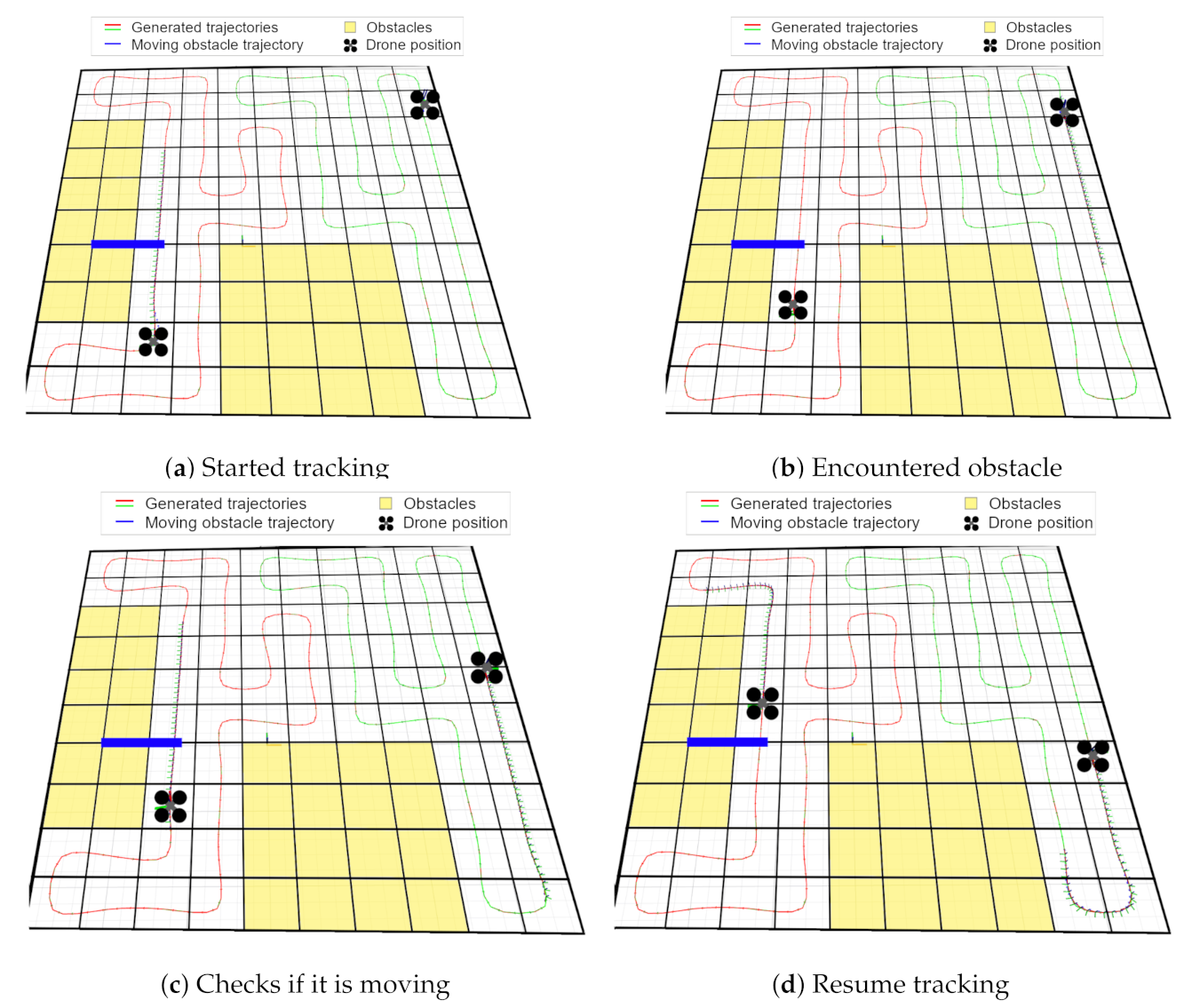
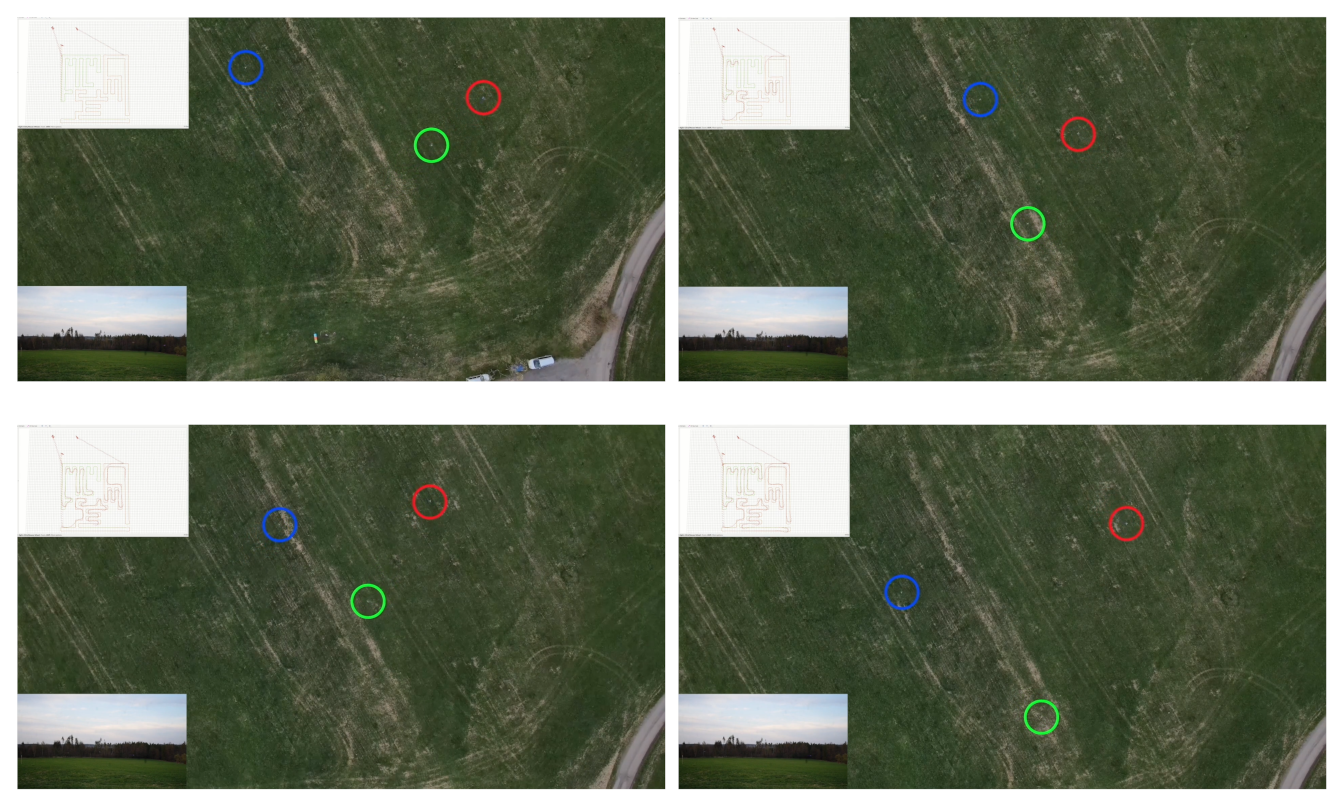
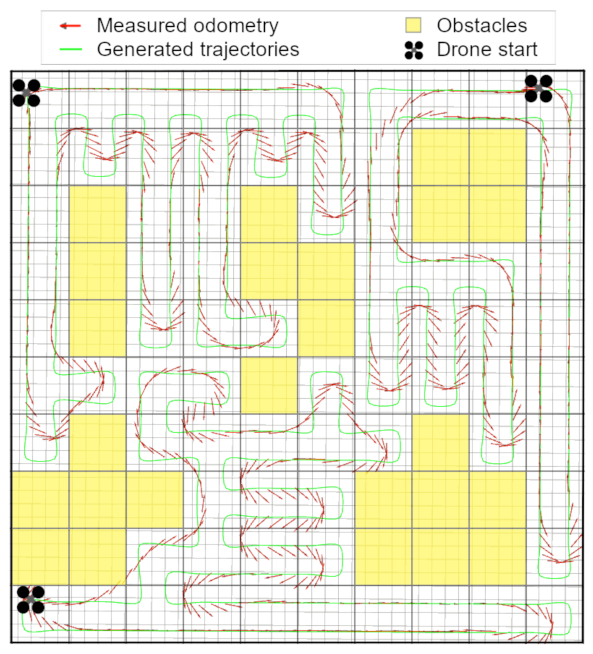
| Parameter | Value | |
|---|---|---|
| Partition of the Environment | 1 | |
| 100 | ||
| 10 | ||
| 10,000 | ||
| Smoothing | p | 5 |
| 0.15 | ||
| Replanning | 2 [s] |
Disclaimer/Publisher’s Note: The statements, opinions and data contained in all publications are solely those of the individual author(s) and contributor(s) and not of MDPI and/or the editor(s). MDPI and/or the editor(s) disclaim responsibility for any injury to people or property resulting from any ideas, methods, instructions or products referred to in the content. |
© 2022 by the authors. Licensee MDPI, Basel, Switzerland. This article is an open access article distributed under the terms and conditions of the Creative Commons Attribution (CC BY) license (https://creativecommons.org/licenses/by/4.0/).
Share and Cite
Chleboun, J.; Amorim, T.; Nascimento, A.M.; Nascimento, T.P. An Improved Spanning Tree-Based Algorithm for Coverage of Large Areas Using Multi-UAV Systems. Drones 2023, 7, 9. https://doi.org/10.3390/drones7010009
Chleboun J, Amorim T, Nascimento AM, Nascimento TP. An Improved Spanning Tree-Based Algorithm for Coverage of Large Areas Using Multi-UAV Systems. Drones. 2023; 7(1):9. https://doi.org/10.3390/drones7010009
Chicago/Turabian StyleChleboun, Jan, Thulio Amorim, Ana Maria Nascimento, and Tiago P. Nascimento. 2023. "An Improved Spanning Tree-Based Algorithm for Coverage of Large Areas Using Multi-UAV Systems" Drones 7, no. 1: 9. https://doi.org/10.3390/drones7010009
APA StyleChleboun, J., Amorim, T., Nascimento, A. M., & Nascimento, T. P. (2023). An Improved Spanning Tree-Based Algorithm for Coverage of Large Areas Using Multi-UAV Systems. Drones, 7(1), 9. https://doi.org/10.3390/drones7010009






